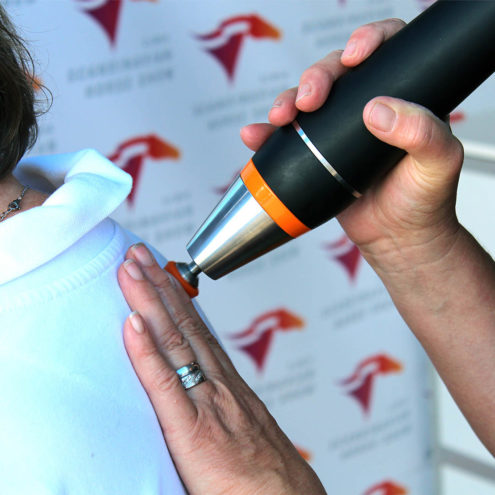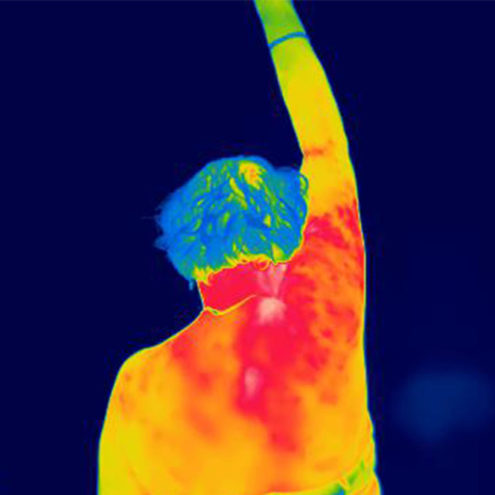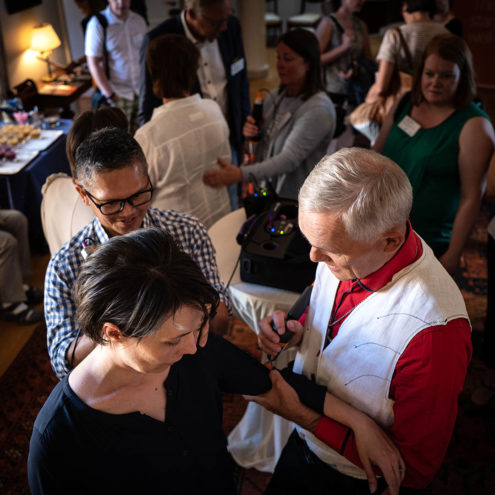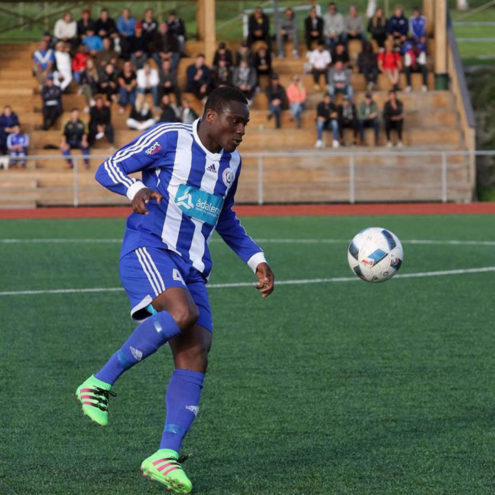Pain in the wrist
There are eight small bones in the wrist between the bones of the forearm and the five bones of the metacarpus to the fingers. In addition, there is soft tissue in the form of joint capsules, ligaments and tendons. The hands are used for most things in everyday life and the wrist is easily overstretched when you repeat the same movement pattern too much, especially when you are untrained for the movement. Pain from the wrist, wrist pain, usually occurs due to such overexertion. But wrist pain can also be caused by a trauma, perhaps a fall where you catch yourself with your hands.
Types of wrist pain
There are a variety of pain receptors in different tissue structures around the wrist. When they are exposed to pressure/direction, they signal pain. This happens, for example, when there is swelling (increased pressure) in the wrist or during various movements such as angling the hand backwards, especially when straining, bending and twisting the wrist in different directions, making different movements with the thumb, etc. The pain can be a constant aching pain or a cutting/stabbing pain during a particular movement or strain. The latter usually occurs due to overexertion. There is also often a loss of strength and power in the hand.
What causes wrist pain?
Pain receptors are abundant in various fascia structures around the wrist. When they are irritated, exposed to pressure, they signal pain to the brain. This can happen when there is swelling in the wrist (increasing pressure on the receptors), which in turn is due to inflammation. The inflammation can be caused by trauma, such as falling and spraining or breaking the wrist. The pain can also be due to overuse, where the tissue is strained when performing different movements. A ganglion on the wrist can occur due to overexertion. A repetitive movement of the wrist can also cause carpal tunnel syndrome where the median nerve is pinched. Prolonged misuse and overuse of the wrist can also cause wrist osteoarthritis.
Pain in the wrist can also occur when there is a restriction of movement or tension higher up in the elbow, shoulders, shoulders or neck, which causes the wrist to be affected, it becomes overstretched as more force is needed to perform a movement.
Wrist strain
The soft tissues, muscles, muscle fascia, tendons, ligaments, joint capsules, etc. of the wrist can become overstretched when you perform a movement or work more persistently than the tissue is trained for. This causes small micro-injuries in the tissue that the body tries to heal.
Pain in the wrist occurs mainly with different angles or movements and loads. You may lose strength in your wrist and find it difficult to perform certain tasks and movements. Read more about wrist strain.
Inflammation of the wrist
Inflammation of the wrist usually occurs due to overexertion when the same movement is repeated many times over a long period of time, causing abrasion. But you can also get inflammation in the wrist due to a trauma, perhaps a fall where you catch yourself with your hands. The wrist can then also be injured so severely that it fractures, causing severe inflammation. Injury to ligaments, tendons, joint capsules, etc. can also cause inflammation of the wrist. An injury to the wrist with a possible infection can also cause inflammation of the wrist. Inflammation of the wrist means that the body is trying to heal the injury to the wrist.
The inflammation causes swelling, and the wrist becomes tense and painful, especially with different movements, but can also be more persistent. The function of the wrist is thus impaired.
Swollen wrist
A swollen wrist is usually caused by direct trauma, such as a fall where the wrist is struck and perhaps fractured or sprained. There may also be swelling due to a wound injury around the wrist. The swelling is the result of inflammation as the body tries to heal the injury by increasing the blood supply to the injured area and releasing white blood cells. A swollen wrist can also be the result of an old injury that has healed and scarred, causing the wrist to become slightly thicker. Sometimes such swelling may remain, but often it will reduce or disappear over time.
A swollen wrist causes increased pressure on pain receptors that signal pain. The wrist hurts and it can feel stiff when moving in different directions due to the swelling.
Sprained wrist
A sprained wrist means that only soft tissues, fascia structures, such as ligaments, tendons, joint capsules around the wrist have been damaged. There is no fracture of skeletal parts. The sprain is caused by trauma, a fall or hitting the hand against something, such as a ball in ball sports.
The symptoms of a sprained wrist are pain in the hand, especially with certain movements. The pain may also radiate to the fingers or arm. The wrist may also swell and it may possibly become bluish (bruise) if bleeding has occurred. Because of the pain, it may be difficult to use the hand to its full extent and it feels weak.
Broken wrist
A broken wrist is a fracture of one or more of the bones that are part of or adjacent to the wrist. A common fracture is of the lower part of the radius bone that borders the wrist on the side of the thumb. The navicular bone, a small bone between the thumb and the wrist, is also often injured. A fracture also damages the soft tissue, fascia structures, around the wrist. In milder cases, a crack (fissure) can occur in a bone, which often heals relatively quickly.
When the wrist is broken, it becomes swollen and painful. The wrist often turns blue and it becomes difficult to move the wrist due to severe pain on movement.
Ganglion in the wrist
A wrist ganglion is a fluid-filled bump on the wrist, usually on top of the wrist but it can also be on the underside. It is usually caused by overexertion of the wrist.
Most of the time, a ganglion is not felt, as it usually does not hurt. However, sometimes it can hurt when you press on it.
Osteoarthritis in the wrist
The wrist is made up of eight small bones of the wrist, which are joined by five bones of the fingers and two bones of the forearm. The bones that join each other are covered with articular cartilage to facilitate gliding and movement in the joint. Healthy articular cartilage normally breaks down and is constantly renewed. In osteoarthritis, breakdown is faster than new formation. It can be caused by inflammation in the joint, for example rheumatic or by injury. Injuries and overloading of the joint can increase the risk of osteoarthritis. This can be caused by trauma, but also by incorrect loading and misalignment of the bone ends against each other.
Osteoarthritis in the wrist causes pain, especially when moving or straining the joint, but more persistent pain may also be present. Swelling and stiffness of the joint are also common, and the pain is usually worse after straining the joint.
When and where should you seek treatment for wrist pain?
If you suspect a fracture, you should seek urgent medical attention at an emergency department to have your wrist x-rayed. An infected wound should also be examined by a doctor at a health center. Once a fracture or infection has been ruled out, you can get help to speed up the healing of other problems and injuries in the wrist at a Fascia clinic.
How is wrist pain treated?
Depending on the type of injury, different types of treatment are required. A fracture may need surgery and a cast. Various types of painkillers and anti-inflammatory drugs are traditionally given to reduce pain and inflammation. However, they often have other negative effects on the body’s ability to heal, gut flora, etc.
Once a more serious injury has been ruled out, treatment at the FasciaClinics can both speed up healing and reduce pain. The treatment is very comfortable and does not normally cause pain. Healing is facilitated by improving the flow of blood to and from the injured area, which helps to transport nutrients to the injured area and remove waste products.
Wrist pain – What can I do myself?
In the acute stage, the wrist should be rested and certainly not overstretched. A support bandage with an elastic wrap can help stabilize the wrist to reduce joint movement. Movement of the wrist without strain, as long as it does not hurt, is important. Try to move your fingers and arms to keep circulation and flow going to speed up the healing process. Movement is important for healing and to avoid stiffness in the joints.

Exercises for wrist pain
Specific exercises are difficult as wrist injuries are of different nature. Movement of fingers and arms, shoulders, as long as it does not cause pain in the wrist is good and important.
Stretch your arms up towards the ceiling and try to angle your hands backwards with your palms facing upwards. This also provides circulation and relaxation in the shoulders, neck, shoulders and arms.
 Search
Search


































